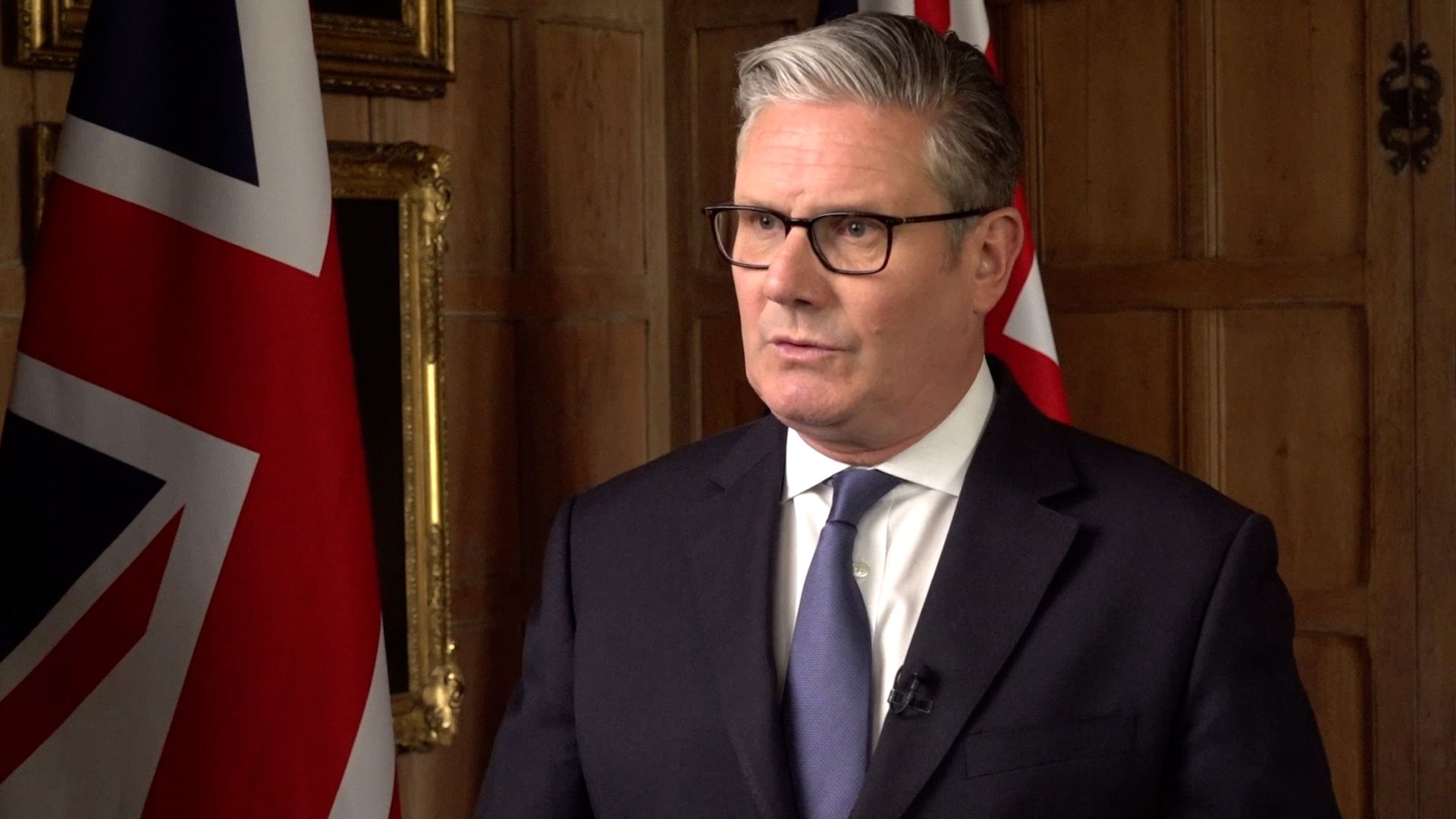
In a 2023 New York Times column, Ezra Klein coined the term “everything-bagel liberalism” to describe the phenomenon of projects that liberals favor getting weighed down by seemingly ancillary requirements liberals impose on them. He noted, for instance, that in California, strict labor and environmental standards embedded in various pieces of legislation passed by the Democratic legislature over the years have made it too costly and time-consuming to build subsidized housing for the homeless.
This same problem, he warned, would imperil one of the centerpieces of the Biden administration’s economic policy: the CHIPS and Science Act. Klein praised the aims of this flagship legislation to reshore semiconductor manufacturing with a $39 billion fund to attract companies to the United States. But in the administration’s implementation of the bill, he discovered a plethora of conditions the government would have to use to evaluate prospective grantees that worried him—ranging from applicants’ commitments to workforce development for racial minorities and women, to environmentally friendly operations, to community investments in transit, housing, and child care, and more. Klein warned that this litany of priorities that were not directly related to the main task at hand—bringing semiconductor manufacturing to the U.S.—risked overwhelming the core enterprise. “The government is adding subsidies with one hand,” he wrote, “and layering on requirements with the other.” An industrial policy mission as complex as bringing back semiconductor manufacturing calls for “an intensity of focus that liberalism often lacks,” he concluded.
Klein resumed his critique of the Biden administration’s industrial policy approach in his book Abundance, coauthored with The Atlantic’s Derek Thompson and released in March—and the two were hardly alone. When the administration first issued the CHIPS Act funding guidelines, Catherine Rampell of The Washington Post wrote that the requirements were the latest example of how “virtually every ambitious program gets saddled with too many other unrelated objectives to do any of them well.” Matthew Yglesias wrote in his Slow Boring newsletter that if promoting semiconductor manufacturing is an important national goal, then the administration should “act like it’s important and say that other causes need to fall by the wayside.” The blogger Noah Smith likewise bemoaned liberals’ “laundry list” habit of “inserting every goal into every project.” Senator Ted Cruz and a dozen of his Republican colleagues got in on the action too, blasting the administration in a letter for including “application requirements that are ancillary to accomplishing Congress’s stated goals or otherwise squander taxpayer dollars on social policy objectives.”
The argument that liberals inadvertently produce scarcity by entangling their own projects in a web of competing priorities is a central tenet of what’s become known as “abundance liberalism”—an emerging policy movement, of which Klein and Thompson are among its most prominent proponents. And in certain contexts, they are right. For instance, I’ve argued in these pages in favor of permitting reform to accelerate the building of clean-energy infrastructure, and elsewhere have endorsed using the Defense Production Act to bypass procedural barriers for important green projects.
But just as too many conditions can doom a project in some contexts, so can too few conditions spell doom in others. Indeed, despite all of the op-ed page consternation, the CHIPS Act’s everything-bagel conditions turned out to be a nothingburger. When stacked up against high-profile economic development failures of the recent past, the CHIPS Act shows that a little bit of everything-bagel liberalism is actually quite useful to crafting effective and politically sustainable industrial policy. When government is handing out vast sums of taxpayer dollars to private industry, the best and only way to achieve public ends is to put the right conditions on the money.
It’ll be years, of course, before we can know for certain whether Joe Biden’s CHIPS Act achieves its goal of rebuilding an internationally competitive advanced microprocessor fabrication industry on U.S. soil—and whether it can withstand Donald Trump’s vendetta against the “horrible” law enacted by his predecessor. But by many measures, the CHIPS Act is already achieving its aim of creating a domestic alternative to the existing geopolitically fraught Taiwanese-dominated semiconductor supply chain. The act’s semiconductor grants program wound up “vastly oversubscribed,” according to Biden’s commerce secretary, Gina Raimondo. The Department of Commerce received some 600 statements of interest from companies seeking to build semiconductor fabrication facilities (known colloquially as “fabs”) in the United States, collectively requesting $70 billion in funding—nearly double the amount available under the law. To take one prominent example, the Taiwan Semiconductor Manufacturing Company (TSMC) received a grant to create a new plant in Phoenix, which is now up and running and achieving chip production yields that outpace the company’s Taiwan plants—a key mark of success. In March, the company announced plans to more than double its investment in Arizona.
The administration’s supposed gauntlet of conditions held back very few suitors. In fact, many of the “extraneous” conditions were directly tied to significant industry needs.
In Abundance, Klein and Thompson singled out the Biden administration’s funding preference for CHIPs Act applicants who “create equitable work force pathways for economically disadvantaged individuals,” including “building new pipelines for workers.” However, workforce development is a critical concern for semiconductor reshoring: The meager existing domestic chip industry in the U.S. means that the country has few skilled workers available to staff new fabs, posing a stark bottleneck for new investment. Indeed, in 2023, TSMC’s new fab in Phoenix was forced to delay production in part because of the shortage of skilled workers.
Nonetheless, Klein and Thompson (along with many other critics) expressed particular dismay over the administration’s consideration of whether a CHIPS Act applicant would arrange for either onsite or local child care for its workers. Yet the industry itself seemed entirely nonplussed by this requirement. In an interview with Oren Cass of American Compass, Scott Gatzemeier, an executive at the semiconductor manufacturer Micron Technologies, explained, “What keeps me up at night [is] getting the workforce for these fabs and building the workforce for the future,” noting that his firm was actively exploring “nontraditional pathways [to] reach out and get more people coming in … At Micron, we’re building a daycare right across the street from our [Idaho] headquarters.” He added, “We’ve already purchased the land [at our coming] New York site to do that [too].” Semiconductor firms are providing perks like child care because it’s a smart strategic choice to attract and retain the skilled workers they need to succeed.
Klein and Thompson’s list of apparently dispensable funding preferences also included the administration’s encouragement of a “climate and environmental responsibility plan.” However, environmental impacts are hardly an abstract concern for chipmaking: Semiconductor manufacturing is a famously water-intensive process, with the typical fab consuming volumes of water each day equivalent to roughly 30,000 households’ usage. When Micron was deciding where to open its next production site, it ultimately chose Clay, New York, over Austin, Texas, in part because of central New York’s superior access to a reliable water supply. Indeed, as Micron explained in a 2024 financial filing, its “manufacturing and other operations in locations subject to natural occurrences and possible climate changes” could “result in increased costs, or disruptions to our manufacturing operations.” If anything, legitimate environmental concerns weren’t emphasized enough in the CHIPS application process, with TSMC opting to locate in notoriously water-constrained Arizona.
Abundance also made at least one notable omission from its list of Biden administration conditions for semiconductor firms. According to a 2023 New York Times report, Raimondo informed governors that the administration would favor applications from firms that had received state and local assurances “to have permitting sped through” normal review processes to expedite the construction of new fabs. That abundance-friendly funding criterion was reported by none other than Ezra Klein.
All of which makes the CHIPS Act an awkward poster child for everything-bagel liberalism run amok. Indeed, in fretting about condition overload, Klein and Thompson might well have their worries backward. To understand the value of industrial and economic policy with conditions, consider what such a policy without conditions looks like: the brief saga of Amazon in New York City.
In 2017, Amazon announced a nationwide competition to determine where it would build its second headquarters (“HQ2”). The competition prompted a stampede of nearly 240 cities applying to host the e-commerce giant, jockeying in a race to the bottom to offer the company billions in tax breaks and other public incentives. New Jersey and Maryland each reportedly offered a record $7 billion in incentives to the company. Within a year, Amazon announced that it would split the new headquarters into two locations: New York City and Arlington, Virginia. In New York, Amazon was set to receive $3 billion in state and city incentives for up to 8 million square feet of office space on the East River waterfront in Long Island City, Queens, replete with a private helipad for CEO Jeff Bezos.
Amazon’s new headquarters would have displaced a planned mixed-use neighborhood—including new apartments with affordable units—and a school lunch distribution center. For its part, the company pledged a handful of community benefits, including office space for tech start-ups, internships and résumé workshops, a new community school, and green space.
After negotiating the deal in secret, New York’s political leaders—Governor Andrew Cuomo, and Mayor Bill de Blasio—and Amazon appeared to expect a celebratory reception. But the surprise deal quickly provoked public outrage. Residents objected to the eye-popping tax breaks offered to one of the world’s richest companies, and the lack of transparency surrounding the deal—something Amazon had insisted on by making public negotiators sign nondisclosure agreements. Elected officials condemned the deal as diverting taxpayer funds to corporate welfare while pressing city issues like affordable housing and deteriorating public transit went unaddressed (and could be worsened by Amazon’s arrival). Representative Alexandria Ocasio-Cortez tweeted, “Amazon is a billion-dollar company. The idea that it will receive hundreds of millions of dollars in tax breaks at a time when our subway is crumbling and our communities need MORE investment, not less, is extremely concerning to residents here.” State Senator Michael Gianaris added, “If Amazon wants to come here, they should be talking about subsidizing Long Island City, not squeezing subsidies out of New York state or New York City.” Others saw behavior like Amazon’s anti-union history and its successful effort to kill a Seattle tax that would have funded affordable housing for homeless people as troubling red flags for the city’s future with the company.
By February 2019, the deal was dead. Amazon announced that it was pulling out of New York, and Virginia would be the sole location for HQ2. (Amazon was reportedly “upset at even [the] moderate level of resistance” it faced in New York.) The company made its decision shortly after the New York State Senate selected Gianaris, a vocal Amazon opponent, to sit on a state public authority board with the power to veto the deal absent unanimous approval.
Some abundance-oriented commentators have pointed to this breaking point as an example of how vetocracy can stifle economic development. In Why Nothing Works: Who Killed Progress—And How to Bring It Back, Marc Dunkelman concludes, “Whether or not Amazon’s proposal was worthwhile, no single state senator should have the authority to scuttle a deal of this magnitude on his own … In a nation desperate to build, progressivism’s imbalance had left the government unable to deliver.”
That may be so. But New York lawmakers took a different lesson from the HQ2 debacle. In 2021, state legislators set out to craft new economic development legislation to draw semiconductor manufacturers to New York—a state-level set of incentives separate from those being developed under the federal CHIPS Act around the same time. And lawmakers had the Amazon fracas front of mind: state Assemblyman Al Stirpe, one of the legislative sponsors of the New York bill, wanted to ensure that any financial incentives for chipmakers came with attached requirements to benefit the community at large. “There is a concern about the Amazon blowup from a year and a half ago in New York City,” Stirpe told reporters. “You want to make sure people who feel that way about incentives for corporations know that we’re very concerned about inclusivity and this project will benefit everybody.”
In August 2022, New York enacted the Green CHIPS Act, which created a $10 billion fund to provide subsidies to chipmakers that moved to the state. To be eligible for funding, firms had to create at least 500 new jobs, reduce their greenhouse gas emissions, provide workforce development opportunities for low-income New Yorkers, and pay prevailing wages for plant construction. “We thought if we were going to give a business an incentive, which is what they want, let’s get something that we want in terms of a sustainable project,” Stirpe said.
The Green CHIPS Act took the anti-Amazon approach. Successful economic development projects required socially beneficial terms and conditions in exchange for public subsidies to corporations. And where HQ2 liberalism failed, everything-bagel liberalism succeeded. In October 2022, on the heels of both the federal and state CHIPS laws, Micron announced its new $100 billion investment in central New York, a project that promises to transform the region.
The juxtaposition of these two approaches—no strings attached for Amazon on the one hand, and some strings attached for semiconductors on the other—is telling. When the government undertakes industrial policy, attaching smart conditions is an important, even essential, predicate for success for several reasons.
First, conditions can help secure industrial policy’s democratic legitimacy. New York’s Amazon deal met resistance because of the top-secret negotiations and because the HQ2 search process smacked of unseemly corporate power: a mega-company dictating development terms to the public, instead of the other way around. Conditions that alter firm behavior and ensure that a project advances important social purposes signal that the public is driving industrial policy, rather than letting the state acquiesce to corporate capture.
Second, the federal government can set high national standards by employing conditional industrial policy. The design of the HQ2 competition played states and cities off of each other to up the subsidy ante for Amazon’s benefit. Because states are in competition with one another for any company’s business, big corporations can drive a bidding war. That’s less true at the national level. While the federal government has to worry about firms moving abroad, it’s still much easier for companies to move across state lines than national ones. That gives the federal government more bargaining power to add conditions consistent with community and coalitional values on subsidies to corporations. While New York was able to put a small number of conditions on its CHIPS bill, the federal government was able to demand far more from firms benefiting from its largesse.
Third, conditions can protect the government’s investment. Many of the CHIPS Act conditions simply reflected the government doing due diligence on potential grantees, ensuring that they were properly prepared to plan for workforce development, environmental sustainability, and other foreseeable issues that could otherwise squander federal funding. Conditions can also include corporate guardrails to make sure that federal subsidies are not siphoned off by shareholders, as the economists Lenore Palladino and Isabel Estevez have explained. Those guardrails can take the form of restrictions on share buybacks and shareholder payments, protections for workers, and public equity stakes. Protective conditions increase the government’s confidence that the investment will achieve its aims, thereby decreasing the risk that the investment fails and becomes right-wing fodder as another liberal wasteful boondoggle.
Other investment protections can seek to maximize the benefit of public subsidies for the American economy. For example, the clean vehicle tax credit under the Inflation Reduction Act included domestic content conditions requiring eligible automakers to substantially source key EV components from the United States or its free trade partners. This leveraged an industrial policy subsidy to spur additional domestic economic activity—in this instance, EV battery production and critical mineral development. In doing so, it also advanced national security priorities by creating a firewall to limit federal funds from indirectly subsidizing foreign supply chains in China.
And fourth, conditions distinguish industrial policy from mere corporate welfare by securing a direct public return on investment. Echoing criticisms of HQ2, in 2022 Senator Bernie Sanders condemned the not-yet-passed CHIPS Act as “corporate welfare,” saying that “taxpayer handout[s]” would go to “five companies [that] made $70 billion in profits last year.” While he supported industrial policy, Sanders said, “industrial policy to me means cooperation between the government and the private sector. Cooperation. It does not mean the government providing massive amounts of corporate welfare to profitable corporations without getting anything in return.” He demanded that CHIPS Act subsidies be limited to only those companies that “agree to issue warrants or equity stakes to the Federal Government. If private companies are going to benefit from generous taxpayer subsidies, the financial gains made by these companies must be shared with the American people, not just wealthy shareholders.” While stopping short of taking an equity stake in semiconductor firms, the Biden administration did impose an “upside sharing” requirement such that companies receiving funding under the CHIPS Act must share any profits achieved above a certain threshold with the federal government.
Industrial policy that benefits private companies for a public purpose ought to yield direct public returns. As the economists Mariana Mazzucato and Dani Rodrik put it, “conditions create a healthy tension between public and private so that subsidies are part of a ‘deal’ rather than a blanket handout.” For instance, when the Mexican government sought to curb grocery inflation, it granted industry concessions by waiving import tariffs, freezing transportation fees, and relieving regulatory burdens—but on the condition that firms agree to consumer-facing price caps on food and essentials. Likewise, when the United States sought to expand health coverage through the Affordable Care Act, it subsidized the insurance industry—but insisted that insurers cover a stronger set of essential health benefits, offer plans to everyone regardless of preexisting conditions, and spend a certain percentage of premium dollars on actual care, among other requirements. Indeed, industrial policy with conditions bears some resemblance to utility regulation: Private firms that benefit from government protection or investment must in turn comply with special rules and requirements for the benefit of the public.
Klein and Thompson have a point that liberals need to pay as much attention to supply as they do to demand. But their prescriptions often only get us part of the way to actual abundance. With housing, exclusionary zoning and NIMBYism do constrain supply (including for public housing) in many high-growth areas. But those obstacles don’t explain why home construction never fully recovered from the 2008 housing crash. With clean energy, old green laws are slowing new green projects. But so are financing challenges, input bottlenecks, fickle market-sensitive private developers, and oppositional investor-owned utilities. Or take semiconductors: Regulatory and permitting processes do slow the build-out of new domestic fabs. But as TSMC showed, so do workforce constraints.
Abundance can be hampered by more than just government red tape. And securing abundance will require a pragmatic blend of catalyzed private power (whether through subsidization or regulatory reform) and directive public power (to ensure that the private sector doesn’t subvert or bungle public aims, or siphon off public dollars).
“Everything-bagel liberalism”—industrial policy with conditions—provides that blend. The government provides the direction, but the private sector generates the output.
Policy makers must find a sweet spot where a project pencils out financially for the firm while the attached conditions hold water democratically for the public. No-strings-attached public money to corporations is generally not democratically viable or desirable. Yet a tangle of attached strings risks strangling a project for a firm.
The question is not whether to do conditional industrial policy, but how much to do. How many conditions should be attached? And which ones? Maybe there’s a role for a new industrial policy agency that can get a stronger grasp of industry dynamics in order to better understand which conditions are valuable and which might be detrimental. The most obvious conditions to include are those that simply adopt an industry’s own best practices—like in the semiconductor context, proactive workforce development and environmental sustainability. And there’s also a strong democratic case for protective conditions that get something back for the public—like a share of profits, or a commitment to R&D investment—even though they might raise hackles from a firm’s shareholders.
The aim, according to Mazzucato and Rodrik, is to “maximize the public value of public investments.” Positive-sum industrial policy enhances the collective good, alleviating scarcity and want. The road to abundance is lined with everything bagels.
The post In Defense of Everything-Bagel Liberalism appeared first on Washington Monthly.


 2 months ago
15
2 months ago
15 



.jpg.webp?itok=1zl_MpKg)





 Bengali (Bangladesh) ·
Bengali (Bangladesh) ·  English (United States) ·
English (United States) ·